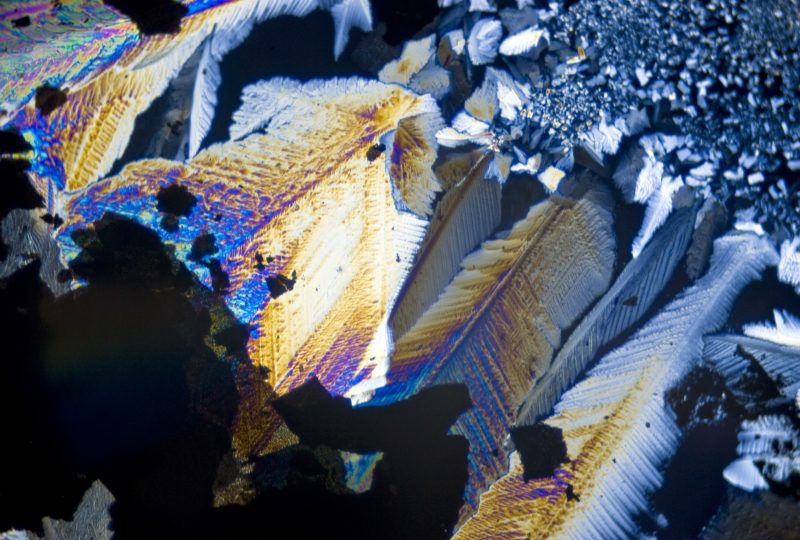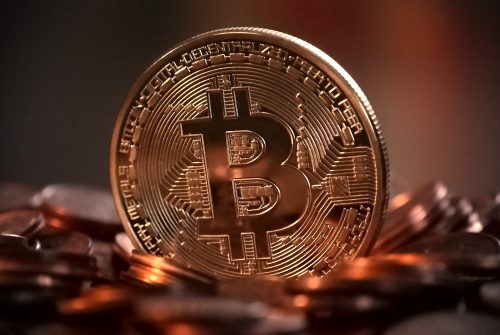Nanomaterials: the opportunities of the infinitely small
30 October 2019 | Written by Thomas Ducato
We talked about it with Vanna Sanna of Nanomater, an innovative Italian start-up that deals with nanomaterials in the pharmaceutical, agro-chemical, cosmetic, food and nutraceutical sectors.

Pharmaceutical and nutrition, but also energy, environment, and technology. There are many areas of application of nanomaterials, extremely small substances that have unique characteristics and potentialities that are still to be explored to a large extent. Since the end of the 1950s, when this technology was first talked about, the evolution of this sector has been constant. In recent years, however, also due to the exponential growth of some enabling technologies, there has been a veritable explosion of nanomaterial applications and more and more companies are focusing on their properties.
Nanomater is an innovative start-up founded in March 2017 based in Alghero. It comes from a consolidated scientific and academic experience in the field of nanomaterials: it deals with the research, development, production, and marketing of different types of nanosystems and provides technological solutions to the academic and business world for the use of nanomaterials. In particular, he deals with the pharmaceutical, agro-chemical, cosmetic, food and nutraceutical sectors. Nanomater wants to help strengthen pre-industrial research, promote nanotechnology applications to create more competitive products on the market and develop innovative nanosystems for well-being and health.
We talked about nanomaterials, the opportunities they offer and future prospects with Vanna Sanna, Research and Development manager at Nanomater.
To clarify: what exactly are we talking about when we refer to nanomaterials?
Nanomaterials can be defined as substances with different shapes, characteristics, and usefulness. What they have in common is that at least one of their dimensions must be in the order of nanometers and, more precisely, between one and 100 nanometers. A nanometer, so to speak, is an infinitely small dimension: it corresponds to the millionth part of a millimeter. To go on the concrete, we’re talking about materials that are between 40 thousand and 60 thousand times smaller than the diameter of one of our hair, 3 million times smaller than an ant. Precisely as a function of these small dimensions, they acquire particular properties, which are not present on the macro-scale.
In what sense?
It is easier to understand what I mean by an example: we are accustomed to seeing gold as yellow, but in the form of nanoparticles this is red-violet in color with obvious variations with the change of a few nanometers. The dioxide of titanium, to take another example, in the nanoscale it acquires as an optical property the transparency that it does not have, instead, when it is found in the macroscopic form. These “new” properties of nanomaterials can also be electrical, physical and chemical.
Are there other advantages?
Another feature that makes these infinitely small materials unique is that when reduced to nanoscale they offer a high surface area/volume ratio. If we start from a cube with the side of 1 centimeter its total surface area will be equal to 6 square centimeters. If we break it down into many smaller cubes with the side of 10 nanometers the surface we will get will be 600 square meters. So by infinitely small reducing the dimensions of the same structure what we get is a huge surface area and this can be functionalized to improve the quality of the materials themselves.
When did you start talking about nanotechnology?
The concept of nanotechnology was born around the end of the 50s when Feynman, Nobel Prize for chemistry (in 1965, ed), spoke about it for the first time at a conference, telling that it was possible to enclose in a structure as big as the tip of a pin all the contents of the British encyclopedia. In the beginning, the reactions were bewilderment and skepticism, but since then enormous progress has been made and the field of application has become really vast, even in the development of microscopes and instruments able to allow us to study nanostructures.
The areas of application are many, in which of these is Nanomater focused on?
The sectors are very numerous and are linked to the nature of the nanomaterials involved: electronics, in which the conductivity properties, energy, and the environment are exploited, with applications in photovoltaic panels, the textile sector to make fabrics impermeable. And again, the agrifood, in which systems are studied to convey pesticides and fertilizers or food ingredients, the cosmetics sector, where the properties of nanoparticles are used to protect against UV rays and then there is the enormous sector of the medicine, ranging from diagnostics to pharmacology. Nanomater mainly deals with the medical field, in particular, pharmaceuticals, for the transmission of molecules, both of natural and synthetic origin, with different pharmacological properties. What we do is to formulate these substances in nanoparticles that can improve their properties and maximize their effectiveness. We have gained a lot of experience especially in the management of natural polyphenols endowed with antioxidant, chemopreventive and anticancer activity: the nanoparticle formulation allows us to overcome some problems related to pharmacokinetic aspects that limit their intake and improve the pharmacological activity.
One of your areas of expertise is food. Would you like to talk about it?
Nanotechnologies in the food industry are applied for different purposes. They can be used to encapsulate active molecules, naturally occurring in foods, such as the aforementioned polyphenols but also vitamins. One area is that of the so-called functional foods: we can encapsulate these substances and add them to a food present in the market, giving them as added value beneficial properties for our health. Other fields of application are related to nanosensors: it will lead to having “sentinel” sensors in foods, able to signal anomalies in food preservation, guaranteeing their quality. Furthermore, smart labels are already being studied in advanced to indicate the state of maturation and deterioration of the food, in particular, fruit and vegetables. Even the packaging will be affected by this technological revolution, with the addition of nanomaterials able to increase the biodegradability of the plastic or increase the shelf life, which is the time of food preservation.
There is a constant relationship between research, design, and development. How is the process articulated?
Our clients are both public bodies, in particular universities, and industrial partners. What we supply are innovative solutions that meet specific needs. The process includes a phase of discussion with the customer, the research and design phase and, finally, development. For example, if we need to develop a nanosystem for the delivery of a chemotherapy drug that targets a specific tumor target, we study the type of tumor of interest and the characteristics of its cells such as some receptors over-expressed on the surface, we identify ligands (molecules able to interact selectively with these receptors, ed) and the optimal polymeric materials to make nanoparticles. We thus come to develop surface-engineered nanosystems, capable of “intelligently” conveying the drug into cancer cells with an increase in activity and a reduction in important side effects.
Yours is a rapidly growing and evolving sector. What are the prospects and what are the possible risks for the future?
The prospects are that nanotechnologies will become more and more part of consumer goods and therefore of our daily life. The risks are certainly linked to the toxicity of nanomaterials, an issue that is being given a lot of attention today and will always be done with more in the future. While on the one hand there has been great excitement in research on nanomaterials, on the other the organs responsible for safety, in the food sector as well as in the pharmaceutical sector, pose problems on this issue that must certainly be addressed, in particular with regard to the effects of toxicity, also in the long term, of non-biodegradable or biocompatible nanomaterials.
Your office is in Sardinia. What is your relationship with the territory and how is your activity viewed by non-experts? Do they understand its scope?
On a regional level, as it is easy to understand, there are not many companies in the sector. The reality with which we interface is that of small and medium-sized enterprises, often also family-run. It is necessary to carry out an education operation on the opportunities and fields of application of nanotechnologies: I must say that customers respond positively once they understand potential and advantages. This awareness-raising and dissemination operation must be done in a widespread manner, in order to understand the real extent of innovation and, above all, the many sectors involved.





